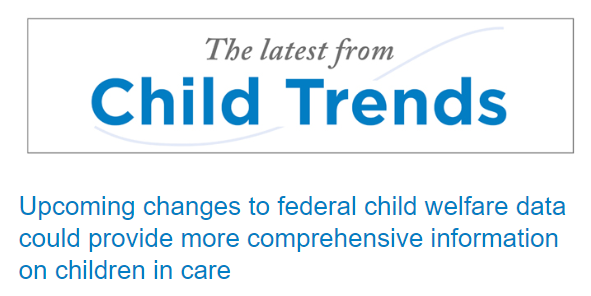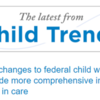This blog has been revised to clarify the purpose of the 2019 Notice of Proposed Rulemaking and its relationship to the 2016 Final Rule.
In 2016, the Department of Health and Human Services (HHS) published a final rule revising the AFCARS regulations (“2016 Final Rule”), standardizing reporting requirements, and adding new data elements. While the rule would greatly enhance the system’s utility, HHS recently published a Notice of Proposed Rulemaking (“2019 NPRM”) to rescind many of the new requirements. Below, we highlight some of the data elements introduced in the 2016 Final Rule—and unchanged in HHS’ most recent proposal—that will improve stakeholders’ ability to monitor outcomes, modify policies, and ultimately improve services for children and their families.
The 2016 Final Rule requires states to report all known circumstances present at the time of removal, even if they are not among the formal justifications for placing the child in out-of-home care. To capture a broader array of circumstances, AFCARS will include prenatal drug and alcohol exposure, family conflict related to sexual orientation and gender identity, homelessness, parental deportation, and human trafficking. Understanding the prevalence of these issues is necessary to better address the needs of children/youth and their parents.
Along with new or expanded reporting requirements in AFCARS, the 2016 Final Rule more clearly defines the reporting population for AFCARS (i.e., children for whom states must report data). The revised reporting population comprises all children for whom the child welfare agency has responsibility for care and placement, including youth in extended foster care beyond age 18. Currently, states differ in how they collect and report data on youth in extended care, making it difficult for stakeholders to pinpoint the number of these youth. Most state data collection systems were developed before extended foster care was an option, and states have retrofitted their data systems and processes to capture this data. States are also inconsistent in whether they report youth over age 18 as discharged from care. The new reporting population should increase the consistency with which all youth in extended care are reported, allowing researchers to leverage better-quality data to understand and make recommendations regarding the utilization of extended care.
The 2019 NPRM includes proposals to remove many of the 2016 data elements that could further strengthen AFCARS, including, among others, educational stability, child sexual orientation, and juvenile justice involvement. (Child Trends recently submitted comments to HHS in support of maintaining all of the 2016 requirements.) The coming data improvements will enhance stakeholders’ ability to address the needs of children in foster care by providing a better understanding of their characteristics and experiences while in care. However, to support local, state, and federal agencies in addressing the needs of all children in foster care, further improvements to AFCARS are necessary: An important place to start would be to retain the data elements currently proposed for removal in the 2019 NPRM.
To read more of Sarah Catherine Williams and Kristin Sepulveda's article, please click here.


Comments (0)